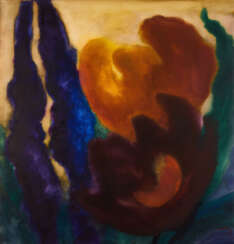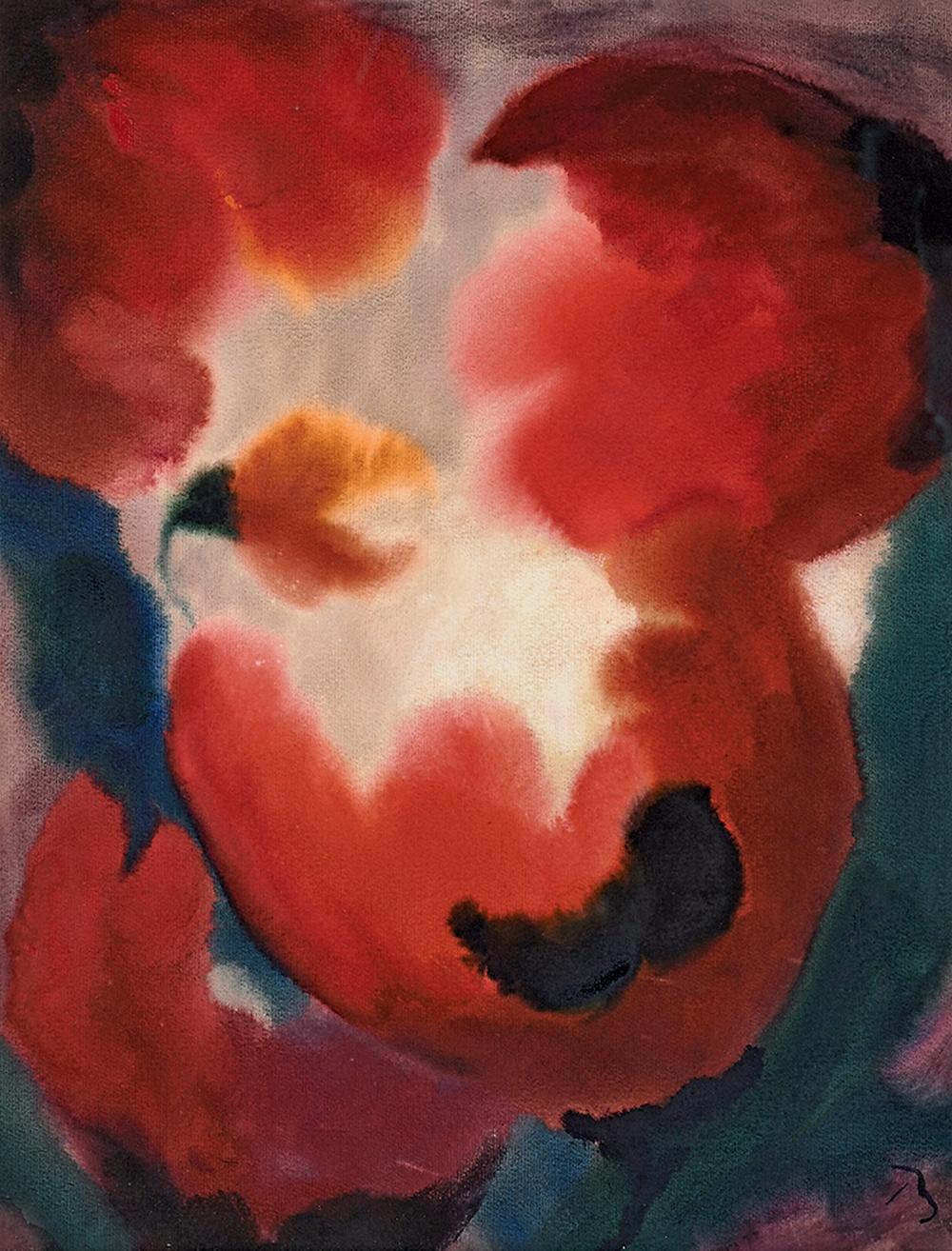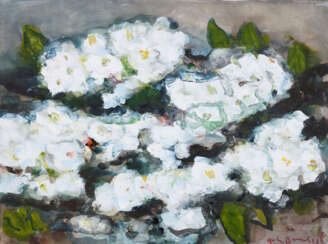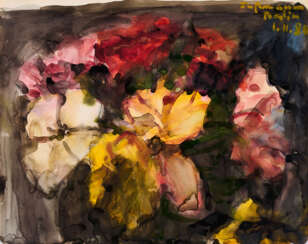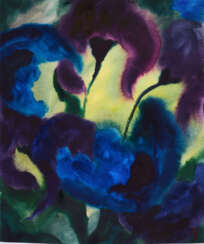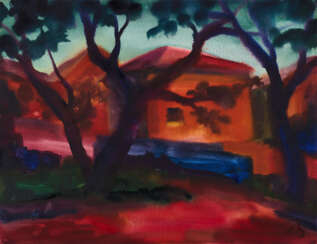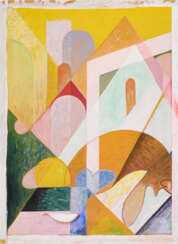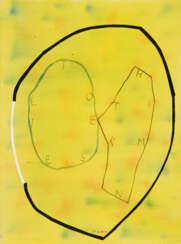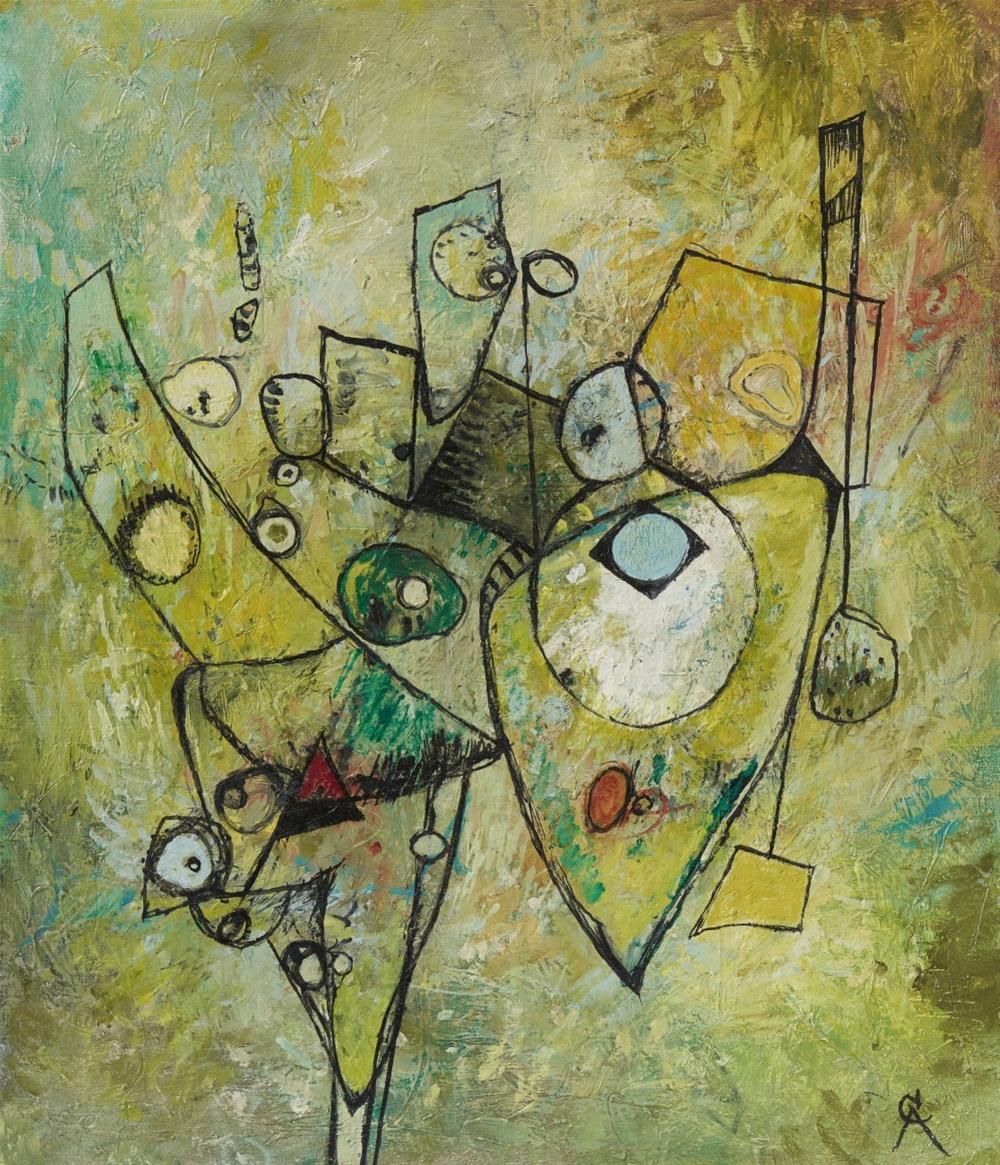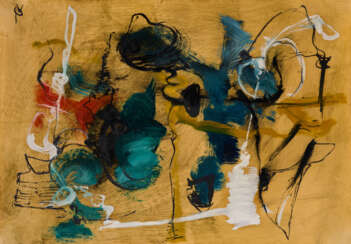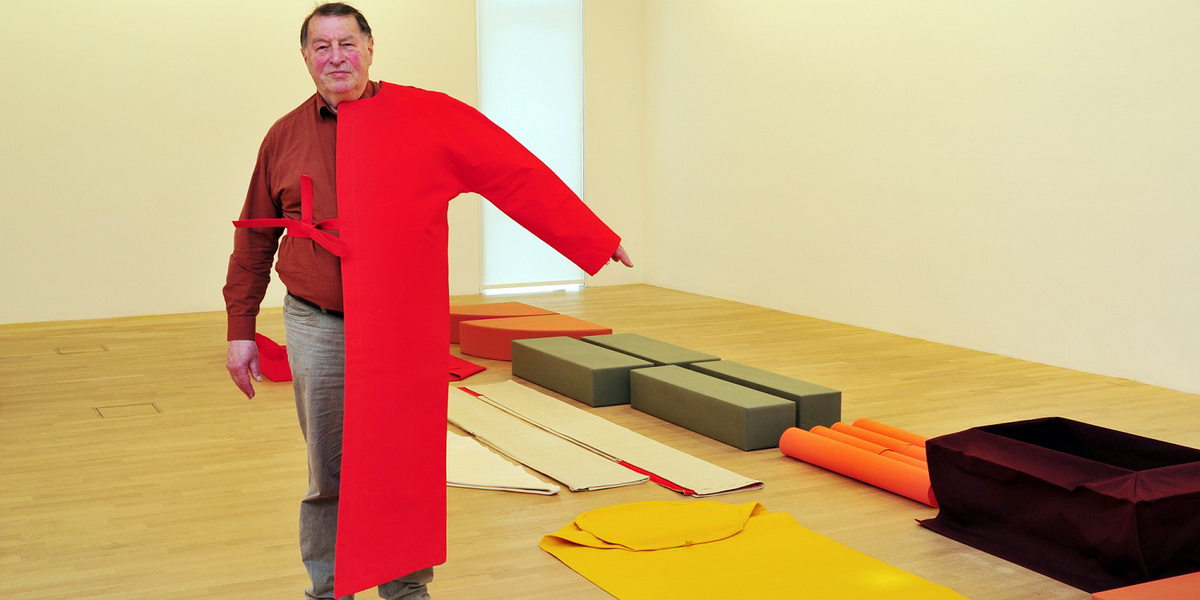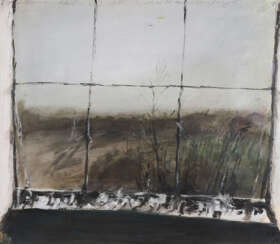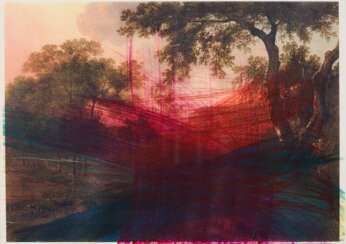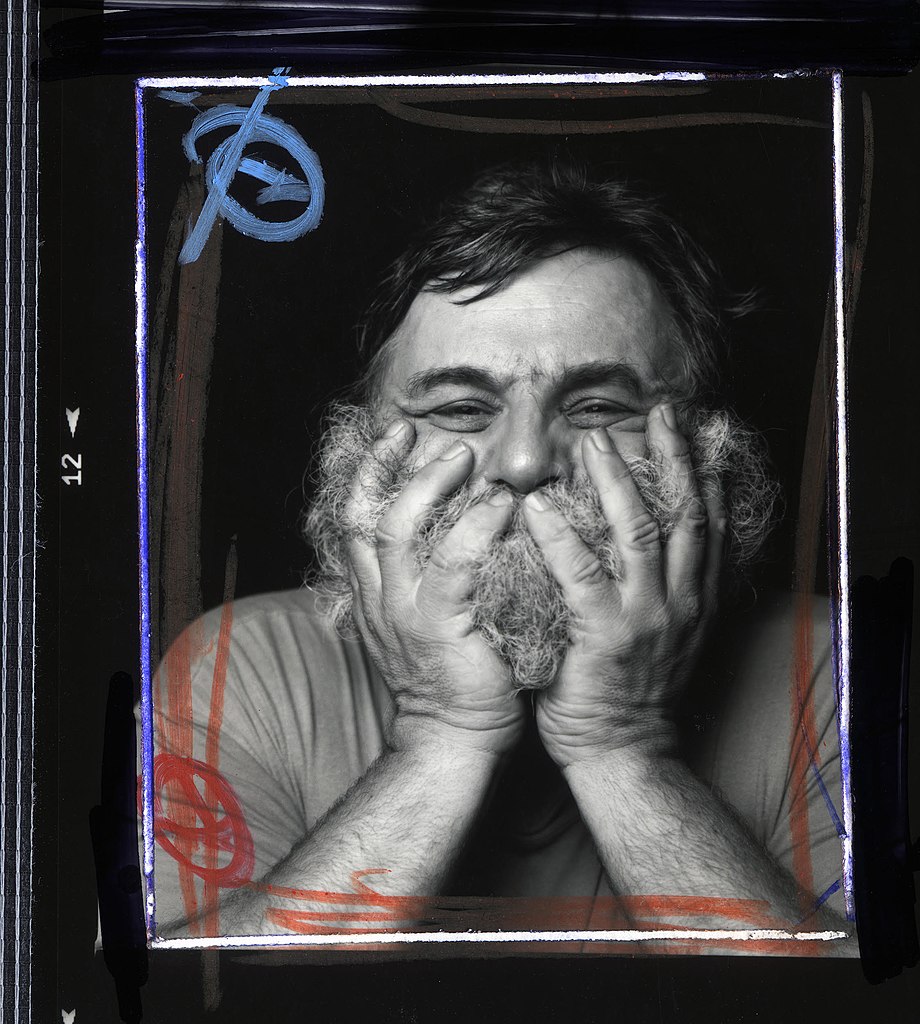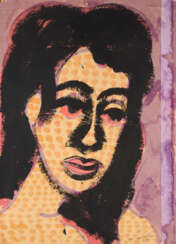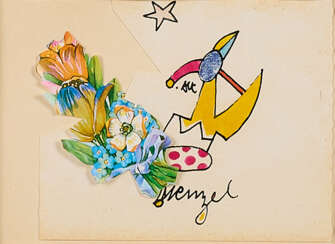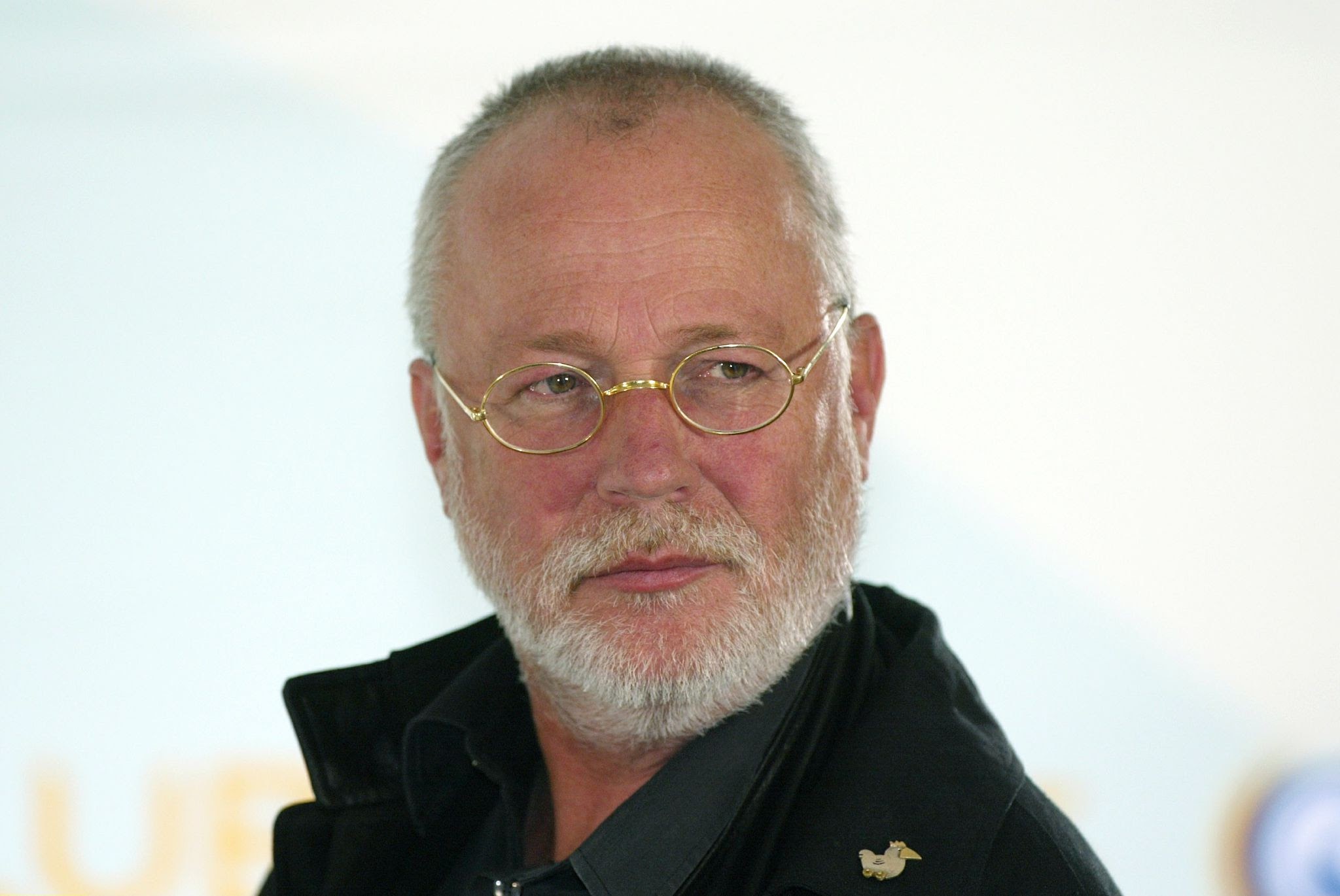
Post War — A1173: On Paper
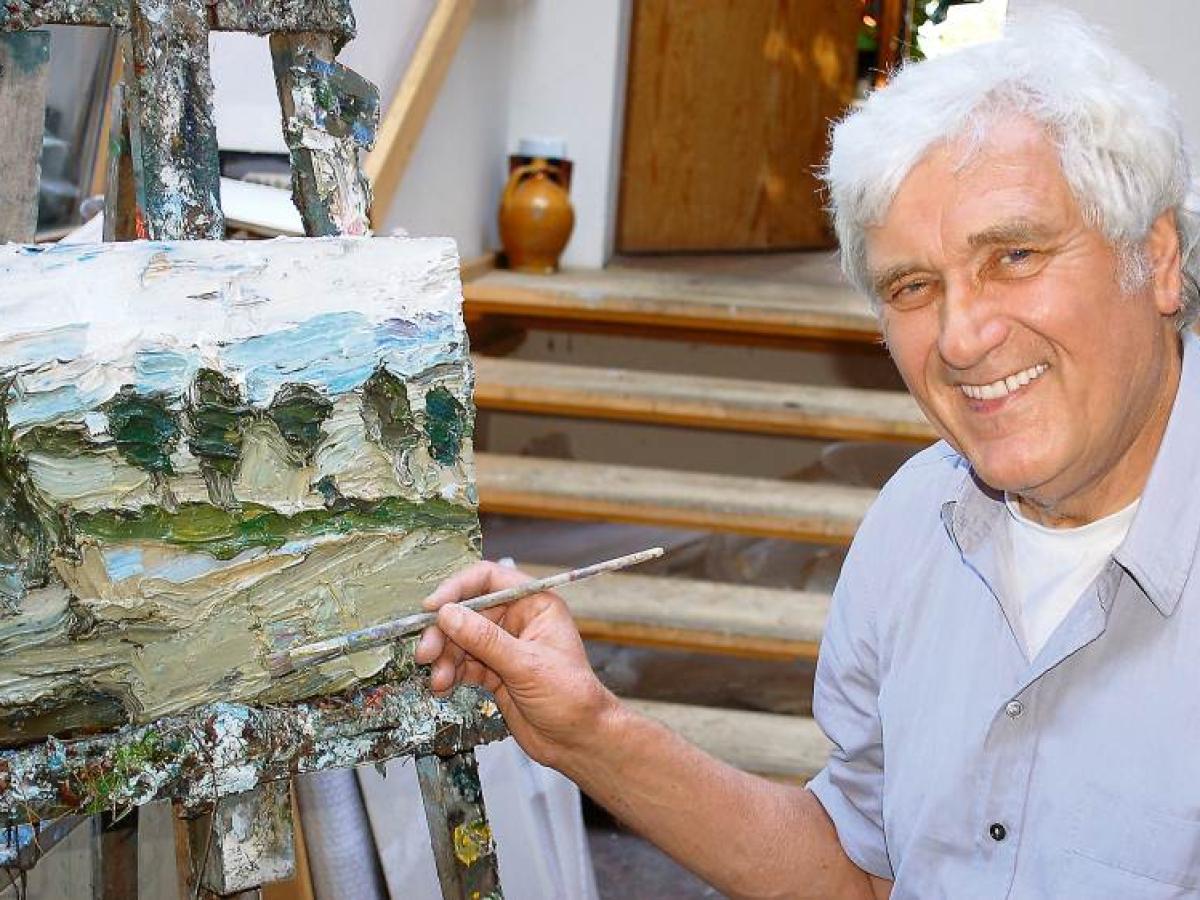
Klaus Fußmann is a contemporary German painter. He studied from 1957 to 1961 at the Folkwang University of the Arts in Essen and from 1962 to 1966 at the Berlin University of the Arts. From 1974 to 2005, he was a professor at the Berlin University of the Arts. His work has won several awards, such as the Villa Romana prize in 1972 and the Art Award of Darmstadt in 1979. Major presentations of his work include exhibitions at the Neue Nationalgalerie in Berlin, 1972; the Mathildenhöhe in Darmstadt, 1982; the Kunsthalle Emden, 1988; the Kunsthalle Bremen, 1992; and the Museum Ostwall in Dortmund, 2003. In 2005 Fußmann completed a monumental ceiling painting in the Mirror Hall of the Museum für Kunst und Gewerbe Hamburg.

Klaus Fußmann is a contemporary German painter. He studied from 1957 to 1961 at the Folkwang University of the Arts in Essen and from 1962 to 1966 at the Berlin University of the Arts. From 1974 to 2005, he was a professor at the Berlin University of the Arts. His work has won several awards, such as the Villa Romana prize in 1972 and the Art Award of Darmstadt in 1979. Major presentations of his work include exhibitions at the Neue Nationalgalerie in Berlin, 1972; the Mathildenhöhe in Darmstadt, 1982; the Kunsthalle Emden, 1988; the Kunsthalle Bremen, 1992; and the Museum Ostwall in Dortmund, 2003. In 2005 Fußmann completed a monumental ceiling painting in the Mirror Hall of the Museum für Kunst und Gewerbe Hamburg.
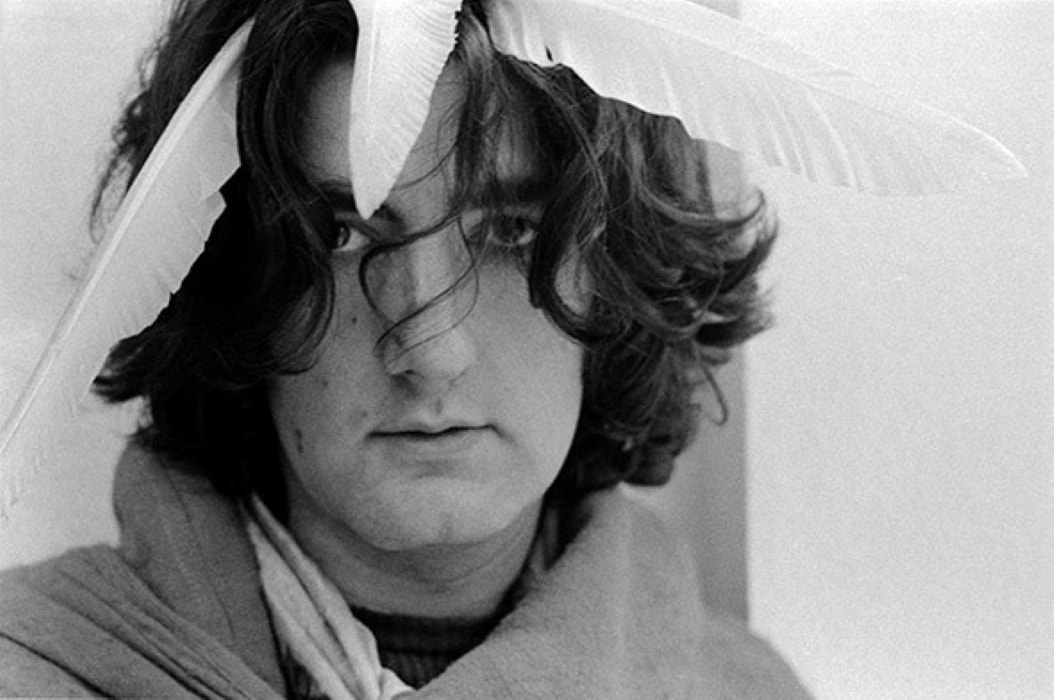
Michael Buthe was a German artist who lived and worked between Germany and Morocco. He exhibited widely throughout Europe during his life and is known for his eclectic and prolific oeuvre which encompasses painting, sculpture, and installation.

Klaus Fußmann is a contemporary German painter. He studied from 1957 to 1961 at the Folkwang University of the Arts in Essen and from 1962 to 1966 at the Berlin University of the Arts. From 1974 to 2005, he was a professor at the Berlin University of the Arts. His work has won several awards, such as the Villa Romana prize in 1972 and the Art Award of Darmstadt in 1979. Major presentations of his work include exhibitions at the Neue Nationalgalerie in Berlin, 1972; the Mathildenhöhe in Darmstadt, 1982; the Kunsthalle Emden, 1988; the Kunsthalle Bremen, 1992; and the Museum Ostwall in Dortmund, 2003. In 2005 Fußmann completed a monumental ceiling painting in the Mirror Hall of the Museum für Kunst und Gewerbe Hamburg.
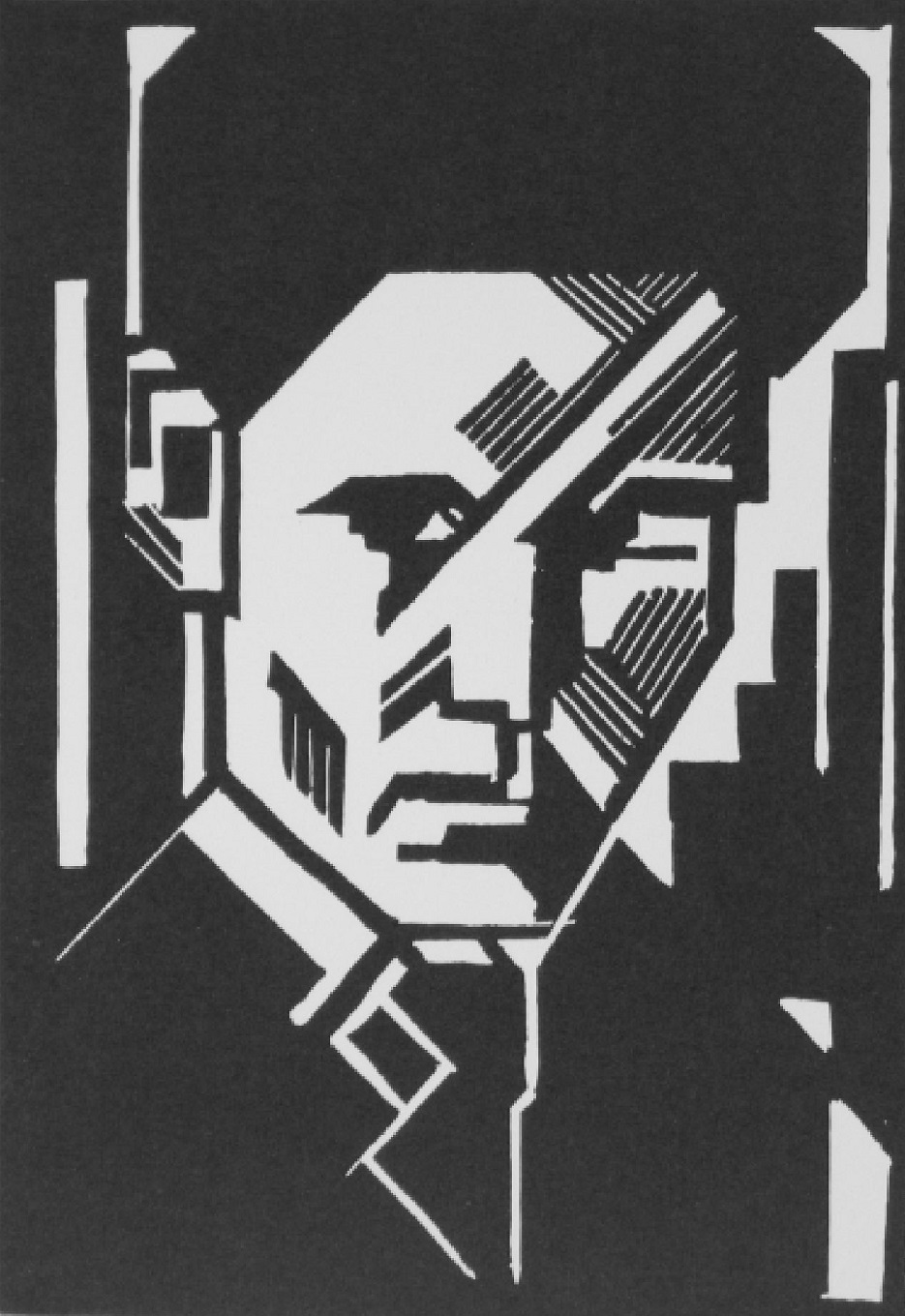
Wobbe Alkema is a Dutch artist, graphic artist, architect, designer and sculptor. He is known for his abstract and geometric works, often combining elements of constructivism and De Stijl.
Alkema was trained as an architect and then turned to art, studying at the Academy of Fine Arts in Groningen. In the 1920s he was involved with the artist collective De Ploeg, which was active in the northern Netherlands and promoted modernist art and culture.
Throughout his career, Alkema continued to explore the principles of abstraction and geometry in his work. His paintings often feature simple geometric shapes such as squares, circles and triangles arranged in complex compositions that suggest movement and depth. He was also interested in the interaction of colour, using bright, bold hues to create dynamic contrasts and harmony.
In addition to painting, Alkema created a number of sculptural works, including abstract reliefs and freestanding sculptures. He also designed furniture and other functional objects, applying his principles of abstraction and geometric form to everyday objects.
Alkema's work is held in the collections of several museums in the Netherlands, including the Groninger Museum and the Amsterdam Stedelijk Museum. He is considered an important figure in the development of abstract art in the Netherlands, and his work continues to be admired for its innovative use of form and colour.
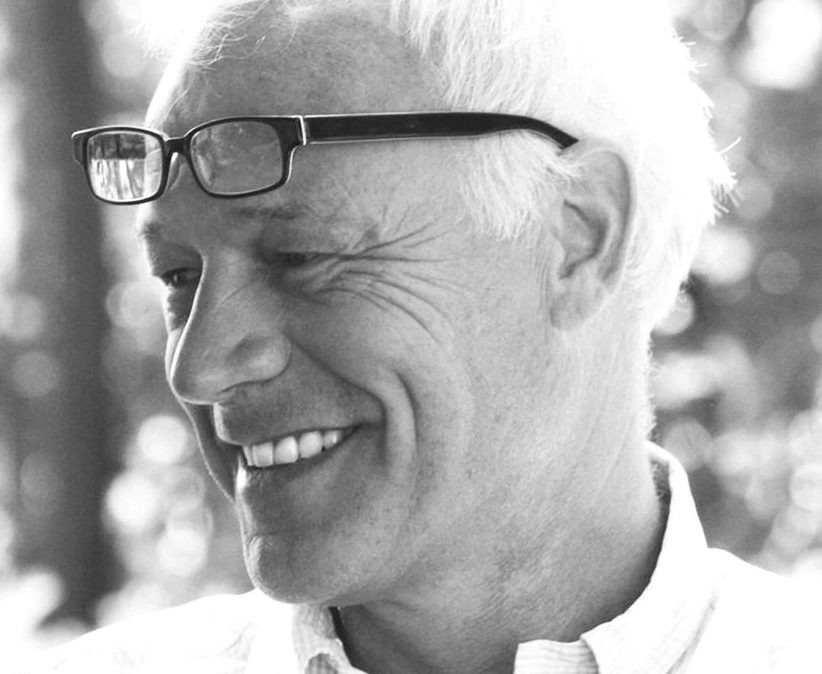
Jürgen Partenheimer is a German artist. Since coming to prominence through his participation in the Paris Biennial in 1980 and the Venice Biennial in 1986, his work has been shown internationally. His practice includes painting, drawing and sculpture, and draws on theory, poetry and prose. His art has been referred to as metaphysical realism.
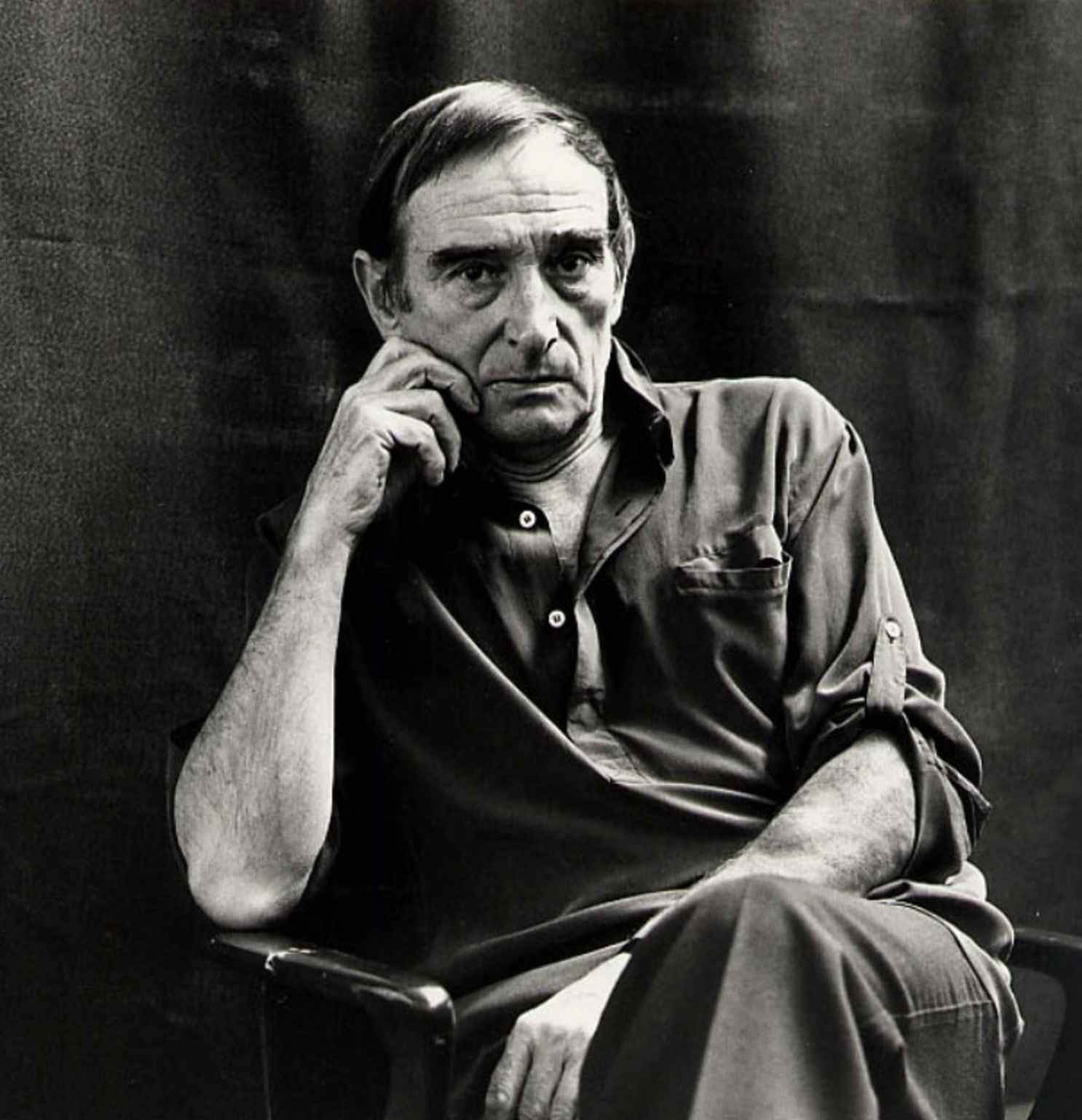
Emil Schumacher was a German painter. He was an important representative of abstract expressionism in post-war Germany.
In 2009 the Kunstquartier Hagen was inaugurated combining the Karl Ernst Osthaus-Museum Hagen as well as the newly built Emil Schumacher Museum in one Museum complex.
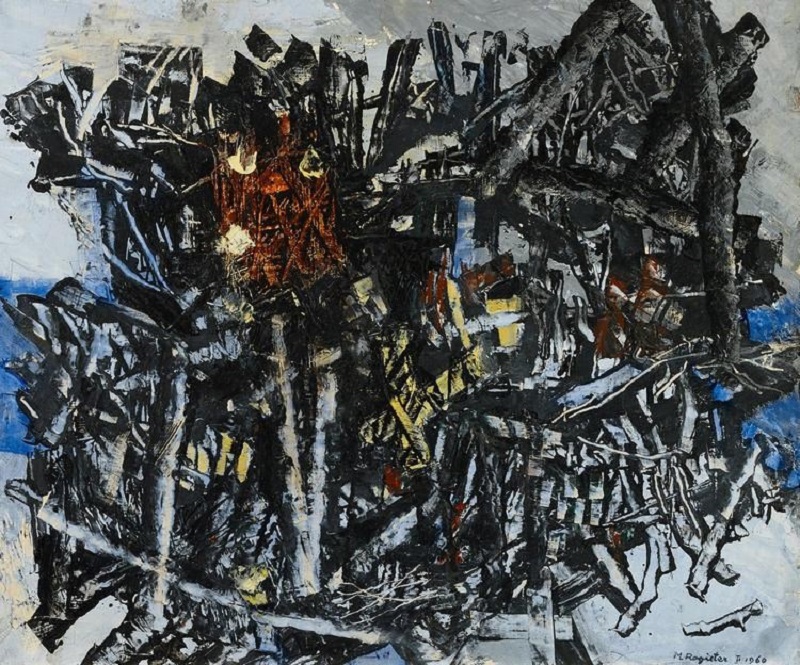
Marie-Louise von Rogister was a German artist and important painter of the Informel.
From 1920 to 1924 Marie-Louise von Rogister studied painting at the Kunstgewerbeschule Kassel. A trip to Paris in 1925 was followed by a study visit to the Academie de la Grande Chaumiere in 1929/1930.
Marie-Louise von Rogister's work developed from the representational to the abstract. Her oeuvre includes paintings in oil and acrylic as well as in wax crayon and pencil. Marie-Louise von Rogister's breakthrough came in the late 1950s with her "Braided Pictures". Areas of colour are overlaid with thread-like, black structures. The so-called "Horizon Paintings" in the 1980s marked a new artistic breakthrough: clear lines and strong colours dominated the paintings. It was also through them that Informal Art came to Germany.
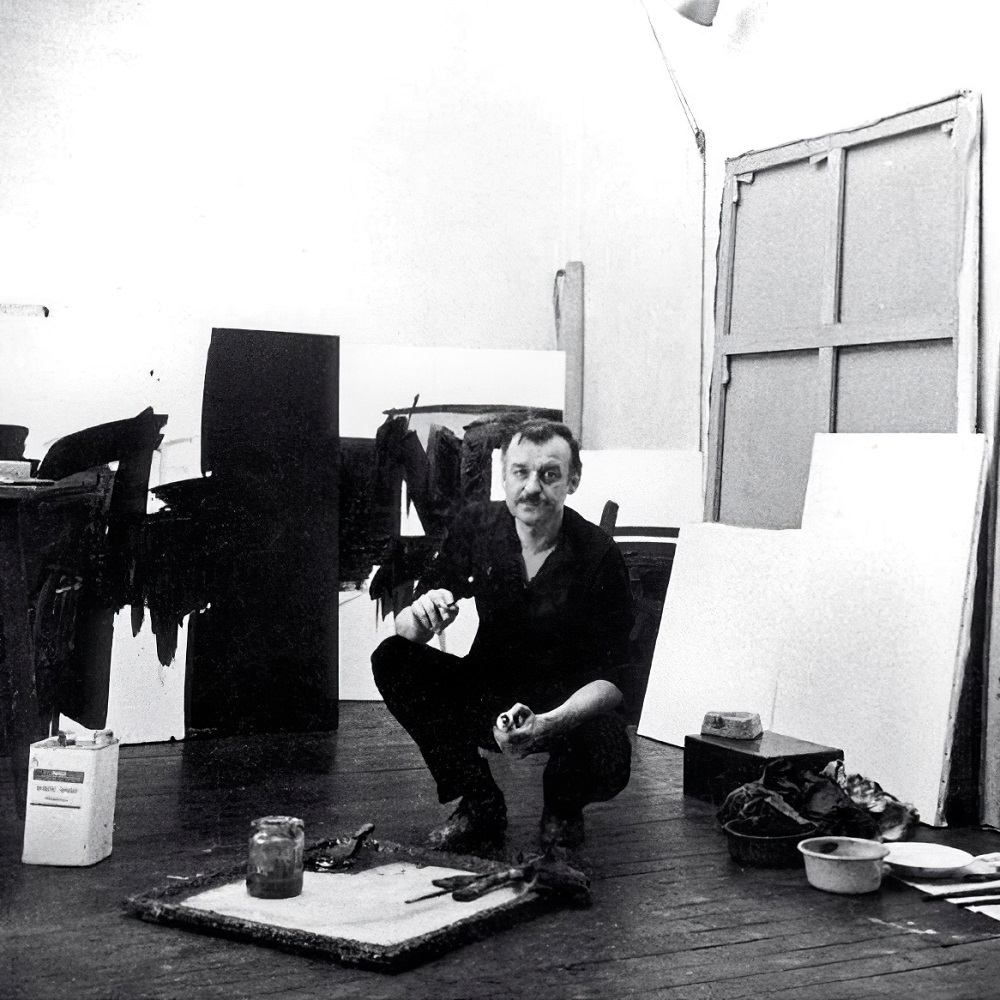
André Marfaing was a French artist known for his abstract paintings and prints.
Marfaing's work was heavily influenced by the Abstract Expressionist movement in the United States, which he discovered during a trip to New York in the early 1950s. He became interested in the potential of color and texture to convey emotion and mood, and he began to develop his own distinctive style characterized by bold, geometric forms and a limited palette of earthy tones.
Marfaing's work often featured large, block-like shapes that seemed to float or hover against a background of textured color. He worked primarily in oil on canvas, but also produced prints and drawings that reflected his interest in the relationship between line and form.
Throughout his career, Marfaing exhibited his work extensively in France and internationally. He was also awarded numerous prizes and honors.
Marfaing's work can be found in many private collections and museums, including the Museum of Modern Art in New York, the Centre Georges Pompidou in Paris, and the Guggenheim Museum in Bilbao.

André Marfaing was a French artist known for his abstract paintings and prints.
Marfaing's work was heavily influenced by the Abstract Expressionist movement in the United States, which he discovered during a trip to New York in the early 1950s. He became interested in the potential of color and texture to convey emotion and mood, and he began to develop his own distinctive style characterized by bold, geometric forms and a limited palette of earthy tones.
Marfaing's work often featured large, block-like shapes that seemed to float or hover against a background of textured color. He worked primarily in oil on canvas, but also produced prints and drawings that reflected his interest in the relationship between line and form.
Throughout his career, Marfaing exhibited his work extensively in France and internationally. He was also awarded numerous prizes and honors.
Marfaing's work can be found in many private collections and museums, including the Museum of Modern Art in New York, the Centre Georges Pompidou in Paris, and the Guggenheim Museum in Bilbao.

André Marfaing was a French artist known for his abstract paintings and prints.
Marfaing's work was heavily influenced by the Abstract Expressionist movement in the United States, which he discovered during a trip to New York in the early 1950s. He became interested in the potential of color and texture to convey emotion and mood, and he began to develop his own distinctive style characterized by bold, geometric forms and a limited palette of earthy tones.
Marfaing's work often featured large, block-like shapes that seemed to float or hover against a background of textured color. He worked primarily in oil on canvas, but also produced prints and drawings that reflected his interest in the relationship between line and form.
Throughout his career, Marfaing exhibited his work extensively in France and internationally. He was also awarded numerous prizes and honors.
Marfaing's work can be found in many private collections and museums, including the Museum of Modern Art in New York, the Centre Georges Pompidou in Paris, and the Guggenheim Museum in Bilbao.

Mercier Philip "Merce" Cunningham was an American dancer and choreographer who was at the forefront of American modern dance for more than 50 years. He frequently collaborated with artists of other disciplines, including musicians, graphic artists and fashion designers. Works that he produced with these artists had a profound impact on avant-garde art beyond the world of dance. There have been numerous exhibitions dedicated to Cunningham's work. Also, his visual art is represented by Margarete Roeder Gallery.

Mercier Philip "Merce" Cunningham was an American dancer and choreographer who was at the forefront of American modern dance for more than 50 years. He frequently collaborated with artists of other disciplines, including musicians, graphic artists and fashion designers. Works that he produced with these artists had a profound impact on avant-garde art beyond the world of dance. There have been numerous exhibitions dedicated to Cunningham's work. Also, his visual art is represented by Margarete Roeder Gallery.

Klaus Fußmann is a contemporary German painter. He studied from 1957 to 1961 at the Folkwang University of the Arts in Essen and from 1962 to 1966 at the Berlin University of the Arts. From 1974 to 2005, he was a professor at the Berlin University of the Arts. His work has won several awards, such as the Villa Romana prize in 1972 and the Art Award of Darmstadt in 1979. Major presentations of his work include exhibitions at the Neue Nationalgalerie in Berlin, 1972; the Mathildenhöhe in Darmstadt, 1982; the Kunsthalle Emden, 1988; the Kunsthalle Bremen, 1992; and the Museum Ostwall in Dortmund, 2003. In 2005 Fußmann completed a monumental ceiling painting in the Mirror Hall of the Museum für Kunst und Gewerbe Hamburg.
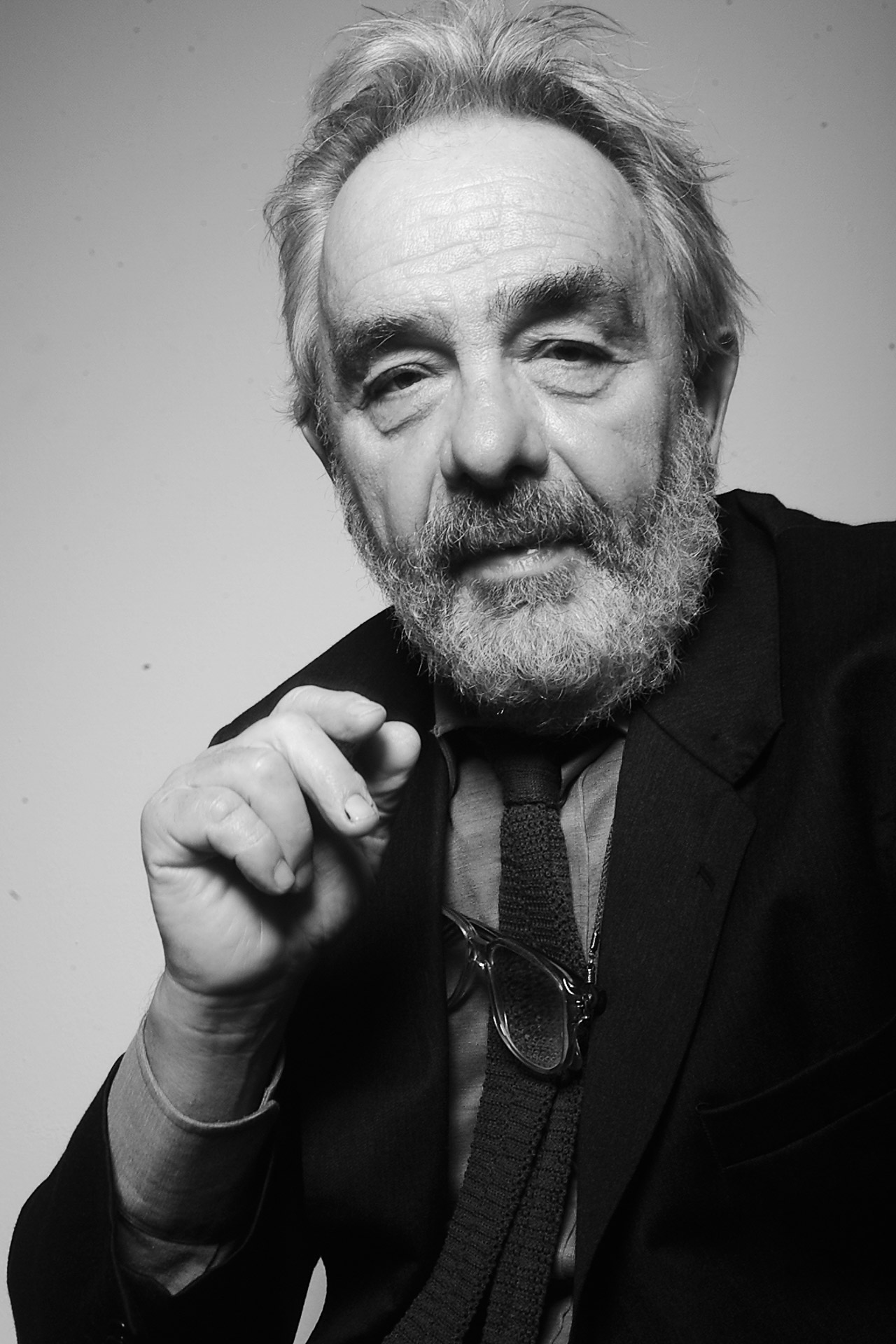
Arnulf Rainer is an Austrian artist who painted in the genre of informal abstract art.
From his early works the artist was inspired by the ideas of Surrealism. He also created works of art where he applied paint over photographs and works of other artists.
In the 1950s, Rainer painted a series of blindfold paintings in the technique of Surrealist automatism. In 1978 he received the Austrian Grand National Prize. Rainer has exhibited in New York, London, Vienna, Paris, Berlin and Munich. His works are in the collections of the Albertina, the Pompidou Center, the Stedelijk Museum, the Metropolitan Museum of Art and the Museum of Modern Art.

Mercier Philip "Merce" Cunningham was an American dancer and choreographer who was at the forefront of American modern dance for more than 50 years. He frequently collaborated with artists of other disciplines, including musicians, graphic artists and fashion designers. Works that he produced with these artists had a profound impact on avant-garde art beyond the world of dance. There have been numerous exhibitions dedicated to Cunningham's work. Also, his visual art is represented by Margarete Roeder Gallery.
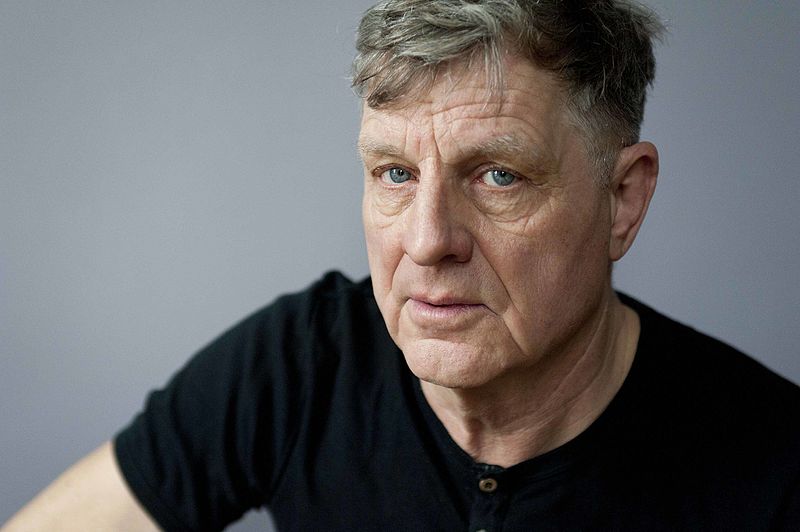
Rainer Fetting is a German painter and sculptor.
Rainer Fetting was one of the co-founders and main protagonists of the Galerie am Moritzplatz in Berlin, founded in the late 1970s by a group of young artists (mainly painters) from the class of Karl Horst Hödicke at the former Berliner Hochschule für Bildende Künste (Berlin Art Academy, today known as Universität der Künste). Fetting is now one of the internationally best known contemporary German artists, having created a large oeuvre of expressive figurative paintings covering many different kinds of subject-matter, as well as many bronze sculptures.
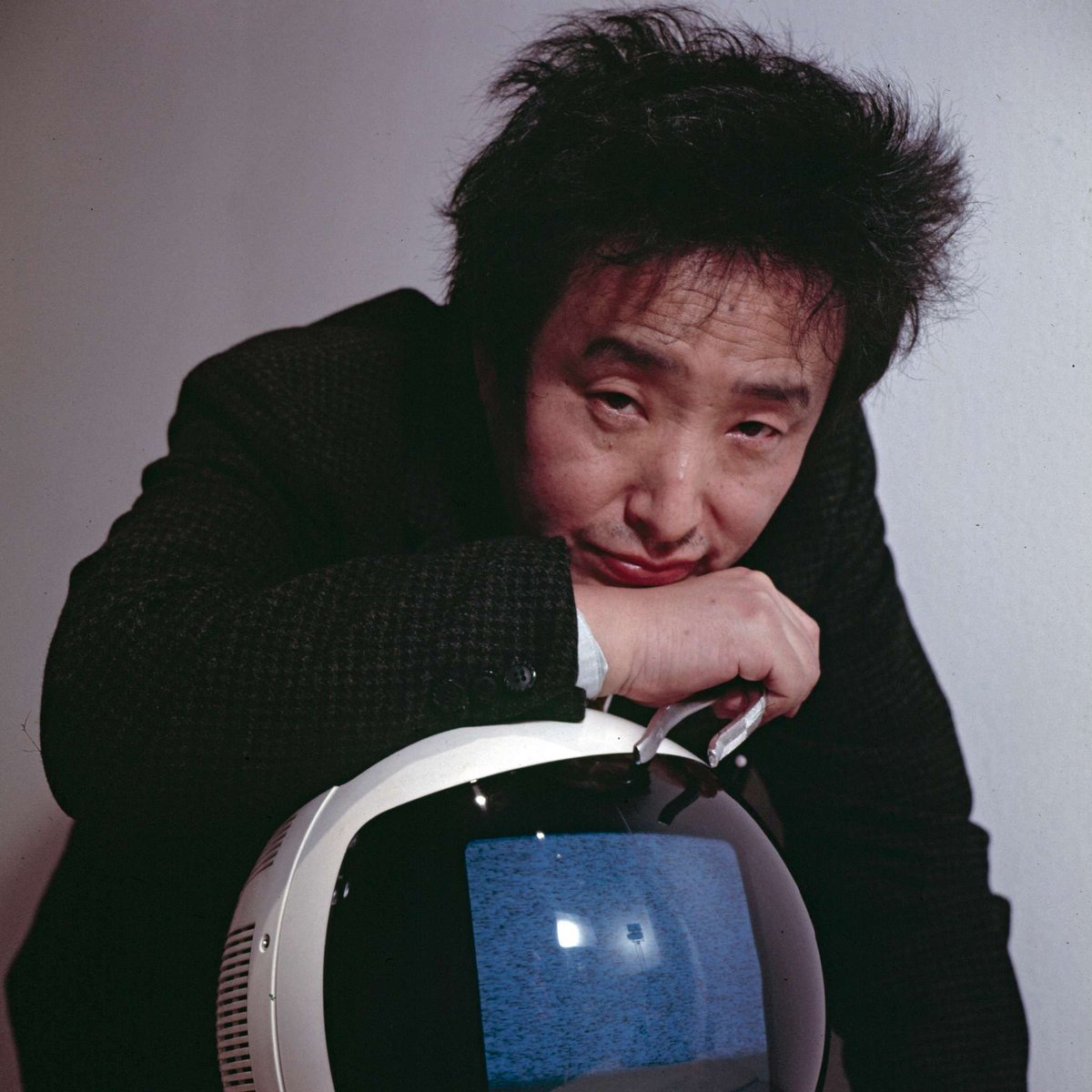
Nam June Paik (Korean: 백남준) was a Korean American artist. He worked with a variety of media and is considered to be the founder of video art. He is credited with the first use (1974) of the term "electronic super highway" to describe the future of telecommunications.
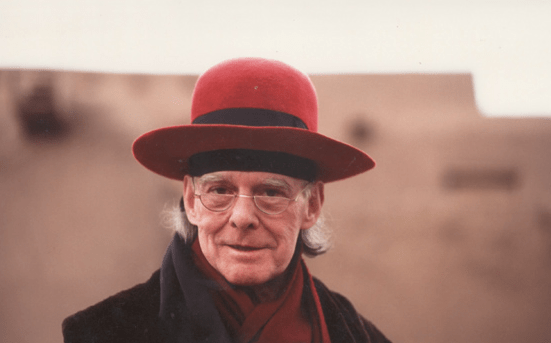
James Lee Byars was an American conceptual artist and performance artist specializing in installations and sculptures, as well as a self-considered mystic. He was best known for his use of personal esoteric motifs, and his creative persona that has been described as "half dandified trickster and half minimalist seer".
Byars' notable performance works include The Death of James Lee Byars and The Perfect Smile, and in terms of multiple sculptures, the many letters he wrote that were composed as decorated sculptures.
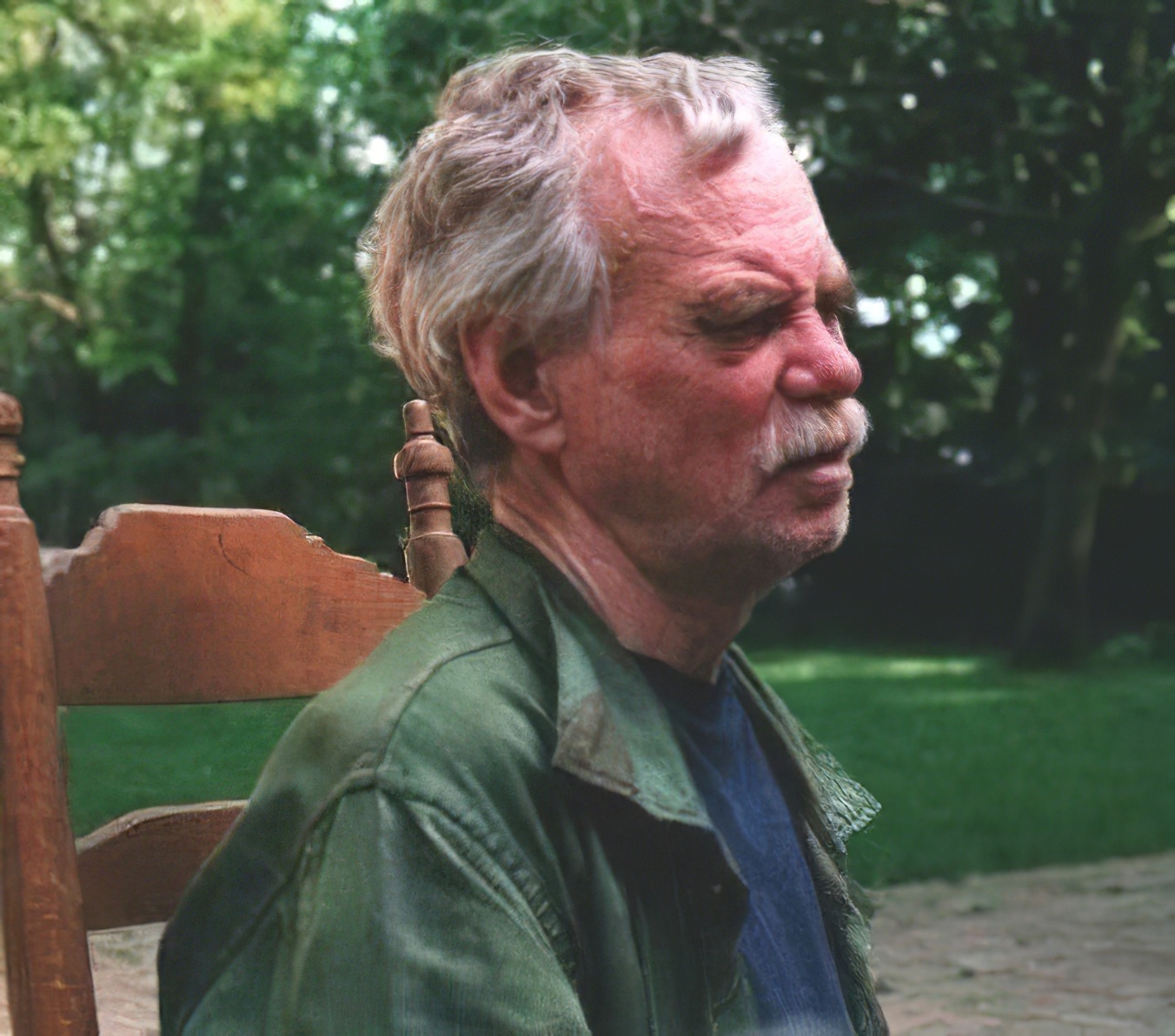
Antonius Höckelmann is a German painter and sculptor educated at the Academy of Fine Arts in Berlin.
Sculpture and painting are intertwined in Höckelmann's work. Wooden, plastic, bronze and even straw figures were painted by the artist, giving them a new sound.
